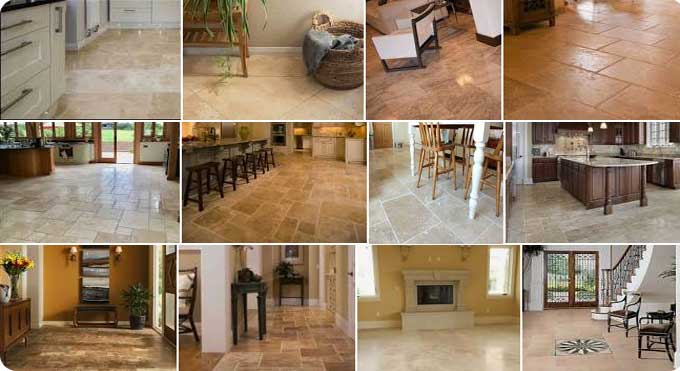
Everything we need to know about the Travertine Flooring

When it comes to choices for flooring in a single home, there may be a huge range. The list includes stone, porcelain, vinyl, and a lot more. Every form of flooring has pros and cons that are unique to it. In reality, the appearance and appeal of any room in the house may actually be made or broken by the flooring.
We may thus think about employing travertine flooring in that situation. The natural stone known as travertine has been utilized for flooring and other construction needs for ages.
It is a sedimentary rock with a distinctive texture and color that is created when calcium carbonate from mineral springs precipitates.
Travertine Flooring
Travertine flooring is highly coveted because of its durability, beauty, and attraction to the natural world. It is available in a variety of colors and surface finishes, including brushed, polished, tumbled, and honed. The most typical colors are beige, gold, white, and brown.
One of the most important qualities of travertine flooring is its durability, which may last for many years with proper care and maintenance. Its resistance to heat, scratches, and chips makes it a fantastic choice for high-traffic areas like kitchens and entranceways.
To avoid stains and moisture damage, travertine must be sealed and cleaned frequently because it is a porous material. Additionally, it is relatively soft in comparison to other natural stones, so periodic cleaning may be required.
Features of Travertine Flooring
Travertine flooring has a number of unique features that make it a popular choice for homeowners and designers:-
1. Natural stone travertine has different hues and patterns that give it an earthy character. It can have a polished or matte texture and comes in a variety of colors, from a light ivory to dark brown.
2. For high-traffic areas like hallways, kitchens, and bathrooms, travertine is a durable stone that can sustain constant foot activity. Travertine flooring may survive for decades with the right upkeep.
3. From traditional to modern, travertine may be utilized in a range of design contexts. It works beautifully with a variety of interior design styles because of its natural texture and neutral hues.
4. The natural insulation properties of travertine may help you keep your house cool in summer and warm in winter, and its smooth surface makes it great for walking on.
5. You can add value to your home by choosing travertine flooring because of its durability and timeless beauty. This flooring material is also unique and luxurious, enhancing the look of your home.
6. Travertine is an environmentally friendly flooring material because it is a natural and regenerative material. Moreover, because it is a natural stone, it may also be recycled and reused, which helps reduce landfill waste.
Benefits of Travertine Flooring
Here are a few benefits of travertine flooring:-
Durable
Use safely and do some routine maintenance on travertine flooring. Travertine flooring may survive for many years if kept in good condition.
The stone seems to age and weather with time, but this just enhances its understated beauty. By using a stone sealing chemical on a regular basis, weathering may also be avoided.
Appearance
As a natural stone, travertine already exudes attractiveness as a flooring material. Travertine flooring gives the room a delicate, aged feel and is available in neutral and earthy tones.
In addition to the uniqueness of each item, the soft tone that produces swirling swirls on the surface also makes it enjoyable to look at.
Resistant in nature
It has a delicate look that only gets enhanced by weathering as it develops over time, and travertine is a durable, robust stone.
While the natural textures are highly resistant to harm, polishing increases the likelihood of damage from scraping.
Drawbacks
Here are a few drawbacks of travertine flooring:-
To learn more, watch the following video tutorial.
Video Source: TileMaster - Floor Cleaning Machines & Solutions
Having trouble maintaining
Although durable, travertine flooring requires routine upkeep, which may be challenging. Surfaces of travertine flooring include minute openings.
This enables spilled liquids to seep into the substance by percolating through the pores. Using a barrier surface sealer and a penetration sealer will take care of this problem.
Costly
Compared to other flooring options, travertine tends to be a little more costly. Due to the weight of the tile and the expertise required for its installation, additional expenditures such as shipping and installation are sometimes more than the cost of the flooring itself.


